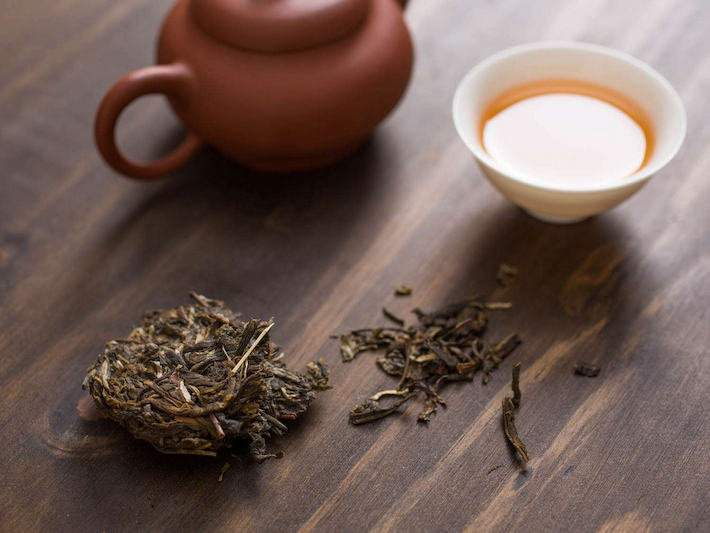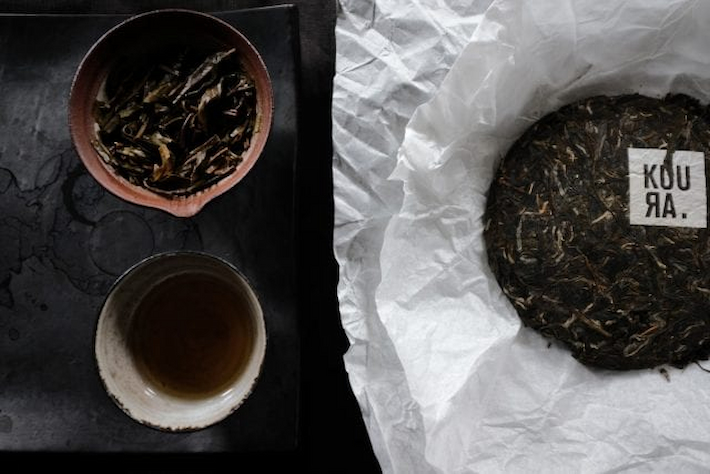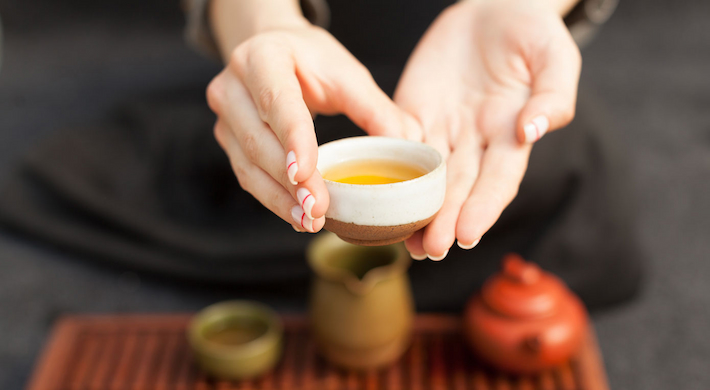Pu-erh tea, which is largely produced in the Yunnan district of China’s southern province of Yunnan, is widely drunk by Chinese and other Asians. This extraordinary tea is made from the leaves and stems of the Camellia Sinensis plant.
Other teas, such as green, oolong, and black teas, are also produced using the same plant. However, even when the same source plant is used, the different teas are prepared using distinct ways.
How is Pu Erh Tea Made?
Although the modern production of Pu-Erh tea is complex, it still follows the traditional way of producing tea using one bud and two to three leaves of Camellia Sinensis. The production stages involve several steps, including withering, rolling, shaping and finally processing to make the delightfully complex and fermented pu erh tea for sale to the general public.

Production of Maocha
Maocha, or rough tea, is made to desiccate the leaves and eliminate the chance of spoilage. As a result, little processing and nearly no fermentation occur at this first stage of pu erh tea production.
The first stage in making raw or matured pu erh tea is selecting the best and healthiest Camellia Sinensis leaves. Harvested leaves are handled with care to avoid harming them and generating extra oxidation. Wilting and withering might be done after harvesting the leaves, depending on the process used by the tea manufacturers.
Drying occurs at various phases of processing to make Maocha after it has been harvested. Harvested leaves are additionally dry roasted in a big pan to halt enzyme activity and prevent total oxidation.
Pressing the Tea
Several further stages must be completed before the tea may be pressed. First, a large quantity of dried Maocha or matured tea leaves is weighed. After weighing, the dry tea is carefully boiled in holed vessels to unstiffen and make the dry tea tackier. Softening the dry tea allows it to remain intact and not collapse while pressing.
Inner tickets, for example, are placed on or amid the dry tea and upended or enveloped in cloth. The tea is then packed within the material and squeezed into a globe or ball with some extra cloth knotted around it.
After pressing the dried tea, it’s then removed from the cloth bag and placed on shelves or countertops to air dry, which normally takes many weeks or months. This drying procedure varies widely depending on the moisture content of the pressed tea.
Tea Fermentation
Microorganisms residing on Camellia sinensis harvested leaves initiate a sequence of chemical reactions that result in tea fermentation. As a result, unlike black teas, which are only oxidised by naturally occurring tea enzymes, pu erh tea is called a fermented tea due to microbial processing.

Fermentation typically takes many weeks to complete. In modern ways of manufacturing pu erh, dominant microorganisms such as Aspergillus are injected to speed up the fermentation process. Inserting dominating species in solid-state formation can produce tea with characteristics similar to that of a drink that’s aged naturally for a while through spontaneous fermentation.
However, the precise type of microorganism used for post-fermentation is very important in modern pu erh production since certain bacteria impact the biochemical content of the final product. These biochemical changes are now used by manufacturers to improve and give superior tea taste and aroma, as well as various health benefits.
Health Benefits of Drinking Pu Erh Tea
As with other natural beverages, pu erh tea has a myriad of health benefits. Through continuous consumption, it can assist in the following areas:
Promotes Weight Loss
The Pu erh drink may help you lose weight by increasing the hydrolysis of stored body fat while decreasing the synthesis of new fat. Furthermore, it can produce good gut bacteria, which can result in less body weight increase and fat formation. So, instead of buying some weight loss supplements, drinking pu erh tea three times per day may help you lose weight, which leads to lower BMI and belly fat measurements.
However, because most research was conducted on animal subjects rather than human samples, the impact of this tea on weight loss remains contentious. As a result, more research is needed to directly correlate the weight loss benefit of pu erh consumption.
Enhances Liver Health
Pu erh tea may help prevent or reverse liver illnesses such as nonalcoholic fatty liver disease. Therefore, tea extracts can prevent high fat diet-induced obesity, as well as high fat diet-induced liver fat buildup and liver inflammation and damage. The extracts can also help protect the liver from the destructive side effects of medications like cisplatin- a chemotherapeutic agent having a well-known liver injury consequence.
Improves Skin Health
Finding good Pu erh tea for sale can make your skin glow as the consumption of this magical tea prevents skin oxidative damage from harmful environmental conditions and pollution while improving overall skin health.

Because of its high polyphenol concentration, pu erh extracts have a strong antioxidant capacity. Furthermore, there is a link between pu erh antioxidant levels and its innate enzyme inhibitory activity, which can be used in the future application of skincare and anti-aging products.
Due to its detoxifying and elastin-protecting properties, pu erh extract can also help combat skin ageing. Elastin has long been recognised as one of the key proteins in the skin that changes with age. Pu erh extract, which contains more polyphenols, particular catechins, and catechin oligomers, can help protect the skin by avoiding elastin protein alteration.
Reduces Cholesterol Levels
Pu erh extracts may successfully regulate “bad cholesterol” levels. Theabrownin, one of the most prevalent pigments and metabolically active components in Pu-erh tea, may increase ileal conjugated bile acid levels. This rise may also stimulate the intestinal signalling system, which can result in lower liver cholesterol.
However, as with pu erh weight loss research, the majority of studies on its effect on cholesterol levels were conducted on animal subjects. As a result, greater research into the relationship between cholesterol levels and drinking pu erh tea is needed.



